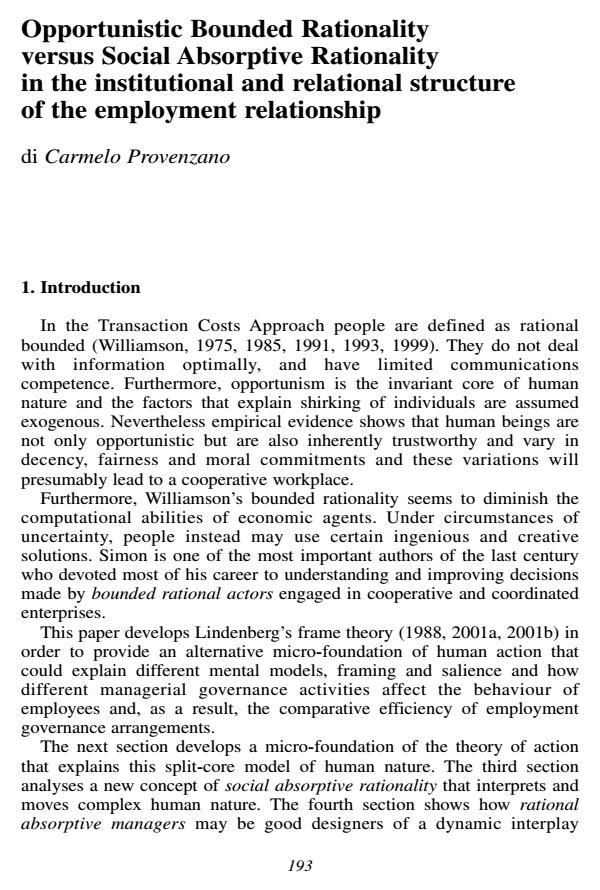Opportunistic bounded rationality versus social absorptive rationality in the institutional and relational structure of the employment relationship
Journal title SOCIOLOGIA DEL LAVORO
Author/s Carmelo Provenzano
Publishing Year 2007 Issue 2007/105 Language English
Pages 13 P. 193-205 File size 58 KB
DOI
DOI is like a bar code for intellectual property: to have more infomation
click here
Below, you can see the article first page
If you want to buy this article in PDF format, you can do it, following the instructions to buy download credits

FrancoAngeli is member of Publishers International Linking Association, Inc (PILA), a not-for-profit association which run the CrossRef service enabling links to and from online scholarly content.
<i> Opportunistic Bounded Rationality versus Social Absorptive Rationality in the Institutional and Relational Structure of the Employment Relationship</i> (di Carmelo Provenzano) - ABSTRACT: The main idea of this paper is that the opportunistic core model, developed in the Transaction Cost Approach, should be extended and include the fact that normative commitment and relational concerns affect and change the pay-offs attached to particular decisions and actions for the parties involved in employment relations. Furthermore, the concept of opportunistic bounded rationality should be replaced by a more positive and comprehensive model of social absorptive rationality. Social absorptive managers, in order to govern employment relationships, do not consider only the effect of traditional incentive contracts, but attempt also to apply new creative forms of governance. Rational absorptive managers are able to understand the interplay between institutions and relational mechanisms and to solve the problem of flexibility and protection of opportunism arising in an uncertain context.
Carmelo Provenzano, Opportunistic bounded rationality versus social absorptive rationality in the institutional and relational structure of the employment relationship in "SOCIOLOGIA DEL LAVORO " 105/2007, pp 193-205, DOI: